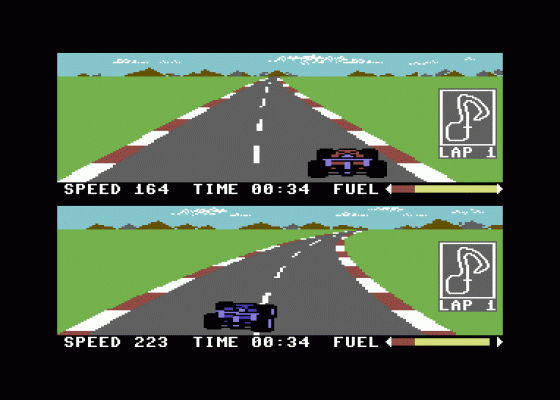Other Reviews Of Pitstop II For The Commodore 64
Pitstop II (Epyx)
Ultra-realistic split-screen motor racing duel
Pitstop II
Plenty of racing games exist on the C64, the only trouble is sorting the good from the bad. Never fear, Jools "let's play skittles with that bus queue" Rignall has been driving around some of the best circuits the C64 can offer...
Pitstop II Vs. Pole Position
A review


 1st January 1987
1st January 1987





